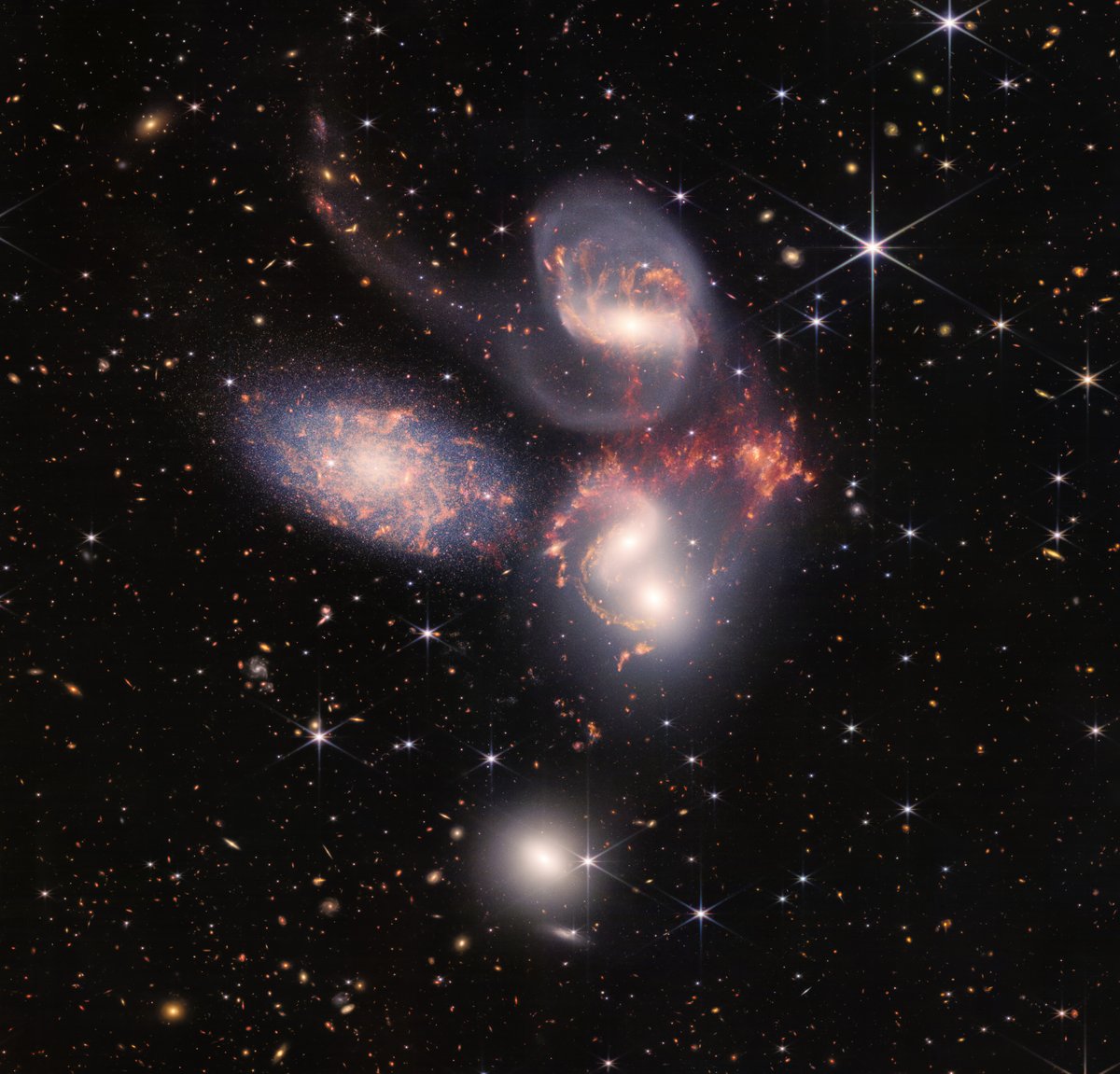
📢 #Webb reveals never-before-seen details of galaxy group “Stephan’s Quintet”, giving astronomers a ringside seat to galactic mergers and interactions. Read more here: esawebb.org/news/weic2208/ or below 👇 

Stephan’s Quintet is a visual grouping of 5 galaxies with only 4 of the galaxies truly close together & caught up in a cosmic dance — a fantastic “laboratory” for scientists to see in detail how interacting galaxies trigger star formation & how gas is being disturbed 👇 

Tight groups like this may have been more common in the early universe when their infalling material may have fuelled very energetic black holes. Even today, the topmost galaxy harbours an active galactic nucleus, a supermassive black hole 24 million times the mass of the Sun 👇
#Webb studied the active galactic nucleus in detail with #NIRSpec & #MIRI. Their integral field units (IFUs), a camera and spectrograph, allow scientists to “slice & dice” the information into many images for detailed study, much like medical magnetic resonance imaging MRI 👇 

#Webb pierced through the shroud of dust 😶🌫️ surrounding the nucleus to reveal hot gas near the active black hole and measure the velocity of bright outflows. The telescope saw these outflows driven by the black hole in a level of detail never seen before 👇 

In the leftmost and closest galaxy in the visual grouping, #Webb was able to resolve individual stars and even the galaxy’s bright core. As a bonus, Webb revealed a vast sea of thousands of distant background galaxies 👇
All in all, this enormous mosaic is Webb’s largest image to date. It contains over 150 million pixels & is constructed from almost 1,000 separate image files. It provides new insights into how galactic interactions may have driven galaxy evolution in the early universe.
• • •
Missing some Tweet in this thread? You can try to
force a refresh










